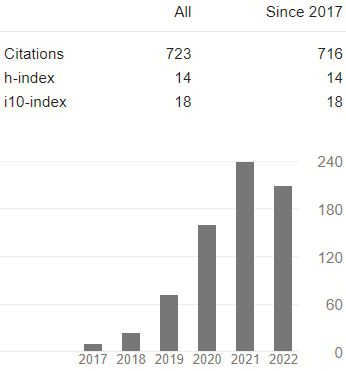ANALISIS TINGKAT KESEHATAN BANK PERKREDITAN RAKYAT (BPR) DENGAN MENGGUNAKAN CAMEL PERIODE 2014 – 2015: STUDI KASUS PADA BPR PP
DOI:
https://doi.org/10.25170/jara.v10i2.43Keywords:
Loan to deposit ratio, capital adequacy ratio, quality of earning asset, profitabilityAbstract
The purpose of this research is to analyze out risk base bank rating by using CAMELS method over a period of years 2014-2016, are included in the category of healthy, healthy enough , lesshealthy or unhealthy. CAMEL have five aspects, namely the aspect of capital using the ratio of CAR (Capital Adequacy Ratio), aspects of the quality of earning assets using the ratio of KAP (Quality of Earning Assets), aspects of management using the calculations of general management and risk management, aspects of profitability using the ratio of ROA (Return On Assets), and aspects of liquidity using LDR (Loan To Deposit Ratio). This research is quantitative descriptive. The analysis tool to test the hypothesis is the discriminant analysis. The result of this paper are CAR have significant with risk base bank rating.
References
Kasmir. (2015). Manajemen perbankan. Jakarta. PT Rajagrafindo Persada.
Muhamad. (2016). Manajemen pembiayaan bank Syariah. Yogyakarta. UPP STIM YKPN.
Peraturan Bank Indonesia No.8/26/PBI/2006 tentang Bank Perkreditan Rakyat.
Peraturan Bank Indonesia No.9/7/PBI/2007 tentang Perubahan atas Peraturan Bank Indonesia No.8/3/PBI/2006 tentang Perubahan Kegiatan Usaha Bank Umum Konvensional Menjadi Bank Umum yang Melaksanakan Kegiatan Usaha Berdasarkan Prinsip Syariah dan Pembukaan Kantor Bank yang Melaksanakan Kegiatan Usaha Berdasarkan Prinsip Syariah oleh Bank Umum Konvensional. http://www.bi.go.id/web/id.
Surat Edaran Bank Indonesia No.26/9/BPPP tentang Penyempurnaan PPAPWD. http://www.bi.go.id/web/id.
Surat Edaran Bank Indonesia No.30/3/UPPB 30 April 1997 tentang Analisis Tingkat Kesehatan Bank Perkreditan Rakyat. http://www.bi.go.id/web/id.
Surat Keputusan Direksi Bank Indonesia No. 26/22/KEP/DIR tentang Kualitas Aset Produktif dan Pembentukan Penyisihan Aset Produktif. http://www.bi.go.id/web/id.
Surat Keputusan Direksi Bank Indonesia No.26/20/KEP/DIR tentang Kewajiban Penyediaan Modal Minimum Bank. http://www.bi.go.id/web/id.
Surat Keputusan Direksi Bank Indonesia No.30/12/KEP/DIR tanggal 30 April 1997 tentang Tata Cara Penilaian Tingkat Kesehatan Bank Perkreditan Rakyat. http://www.bi.go.id/web/id.
Surat Keputusan Direktur Bank Indonesia No.26/20/KEP/DIR tentang Kewajiban Penyediaan Modal Minimum Bank. http://www.bi.go.id/web/id.
Susilo, T. dkk. (2000). Bank & Lembaga Keuangan Lain. Jakarta. Salemba Empat.
Undang-Undang No.10 tahun 1998 tentang Perubahan atas Undang-Undang No.7 tahun 1992 tentang Perbankan, http://www.bpkp.go.id/uu/filedownload/2/45/435.bpkp. 4 Mei 2015.
Undang-Undang No.13 tahun 1968 tentang Bank Sentral. http://www.hukum.unsrat .ac.id/uu/uu_13_1968
Undang-Undang No.23 tahun 1999 tentang Bank Indonesia. http://www.bi.go.id/web/id.
Undang-Undang No.3 tahun 2004 tentang Perubahan atas Undang-Undang Republik Indonesia nomor 23 tahun 1999 tentang Bank Indonesia.
http://www.zakapedia.com2014/10/jenis-jenis-bank-yang-ada-di-indonesia.html, 4 Mei 2016.
http://www.kliping.mediabpr.com/p/apa-itu-bank-perkreditan-rakyat-bpr.html, 4 Mei 2016.
Downloads
Published
Issue
Section
License
Authors who publish with this journal agree to the following terms:
- Authors retain copyright and grant the journal right of first publication with the work simultaneously licensed under a Creative Commons Attribution-ShareAlike 4.0 International License that allows others to share the work with an acknowledgment of the work's authorship and initial publication in this journal.
- Authors are able to enter into separate, additional contractual arrangements for the non-exclusive distribution of the journal's published version of the work (e.g., post it to an institutional repository or publish it in a book), with an acknowledgment of its initial publication in this journal.
- Authors are permitted and encouraged to post their work online (e.g., in institutional repositories or on their website) prior to and during the submission process, as it can lead to productive exchanges, as well as earlier and greater citation of published work.














